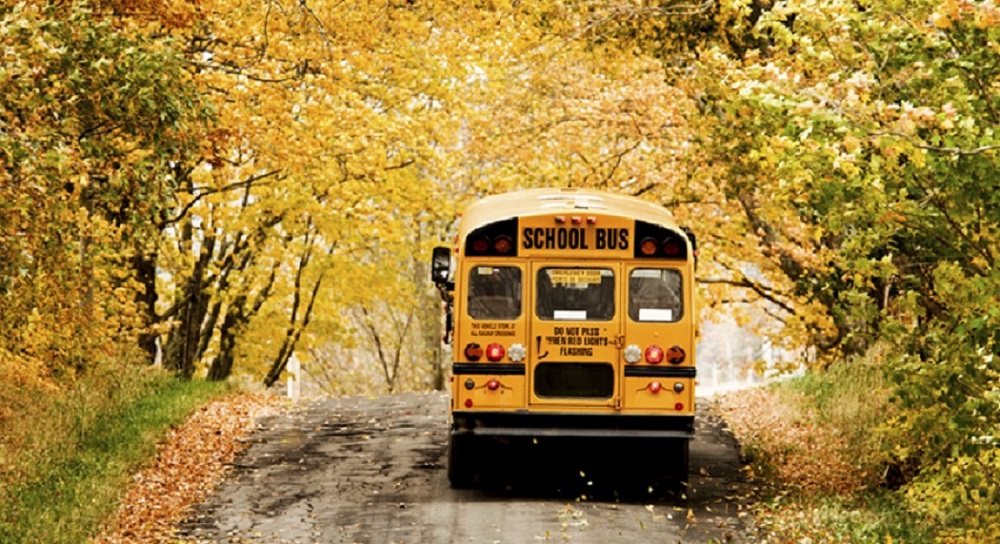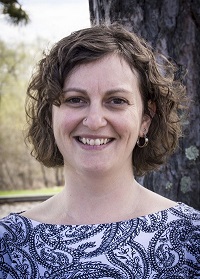Going the Country Mile
How UW‒Madison is addressing Wisconsin’s rural education issues
September 29, 2016 | By Lynn Armitage

Wisconsin attracts thousands of tourists year-round who make the trek to explore its scenic farmlands, and camp, canoe, ski, fish and hike its great outdoors. While visitors to Wisconsin’s rural and wilderness areas are plentiful, attracting teachers to its smaller cities and townships can be a challenge, say some education experts.
Why is that?
Peter Goff, a WCER researcher and assistant professor in UW–Madison’s Department of Education, Leadership and Policy Analysis, is working on an answer to that question and others.
In a new research collaboration with the Wisconsin Association of School Personnel Administrators and the Wisconsin Department of Public Instruction, Goff has been applying his analytical skills and labor market expertise to the agencies’ statewide application and hiring data. Among other findings, his work suggests that teachers looking for employment in Wisconsin, regardless of where they grew up, prefer positions in suburban schools, rather than rural or urban areas.
However, there is a greater demand for teachers in rural schools, which employ 26 percent of Wisconsin’s 75,000 teachers, according to DPI data. “Interestingly, the hiring pool for teachers in rural districts doesn’t look that much different in numbers or qualifications than those in other districts, with the exception of suburban districts, which tend to attract 20 percent more applicants than districts in other locales,” states Goff.
“We know that retaining teachers is a problem facing all schools, but teachers right out of school will take a rural job just to get some experience under their belts, while continuing to look for a position in a suburban area,” he explains.
The UW‒Madison education labor expert says it costs anywhere from $4,000 to $9,000 to hire one teacher in Wisconsin. “So if you hire teachers who are transitory and you have restricted funds, as they do in rural schools, you are bleeding yourself every time you hire a new educator.”
Ken Kasinski adds another perspective to this conversation. As the agency administrator for CESA 12, an education service agency in Ashland comprised of 17 rural school districts, Kasinski says he believes the most immediate problem in his region is recruiting.
“A lot of teachers don’t want to come to a town of 2,500 people and work in a school with just 200 kids. They wonder if they will have access to enough resources,” explains Kasinski, who has been working in rural education for the last 30 years and has loved every minute of it. He makes a strong argument for rural teaching: “We always talk about smaller learning communities as the best way to educate students. Isn’t that exactly what rural schools are?”
In keeping with the Wisconsin Idea that university research should benefit all citizens of the state, a partnership among DPI, and UW–Madison’s School of Education and Wisconsin Center for Education Research, offers school districts help in addressing local issues.
The university places skilled graduate students, known as Network Fellows, in education organizations across the state to provide free problem-solving assistance. It is a new way to connect UW–Madison education researchers with the state’s K-12 educators and policymakers.

Jennifer Seelig, a Network fellow with the University of Wisconsin–Madison, is working closely with CESA 12 administrators to recruit and retain rural education teachers. Photo by Seth Carlson/Price County Review
Earlier this year, The Network assigned doctoral student Jennifer Seelig to assist Kasinski and other district leaders of CESA 12. Together, they decided she would work on a project to improve teacher recruitment and retention.
“We tell our fellows that they ARE the Wisconsin Idea: Their job is to bring to the field the knowledge and resources of our great university for the public good, and Jennifer has done exactly that through her field work in Northern Wisconsin,” says Laura Dunek, a Network project coordinator who helped place four fellows in rural assignments last year.
Besides high poverty—about 51 percent of students in CESA 12 are eligible for free or reduced lunches, according to its administrator—many other issues feed into recruitment and retention challenges for rural school communities, such as isolation.
“If you’re a single person trying to find a relationship outside of work, it’s very difficult way up here in the north woods,” says Kasinski. As is finding a place to live, since affordable rentals generally are hard to come by in Northern Wisconsin.
According to Seelig’s research, other significant factors play into attracting teachers to rural classrooms. For one, rural teachers earn less than urban and suburban educators. And because rural schools are smaller, teachers may have to teach more than one subject, translating to more work for less pay.
It also doesn’t help that fewer students are going into teaching overall. The U.S. Department of Education reports a 27.9 percent decrease in the number of college students enrolling in teacher prep programs across the state.
In his research, Goff discovered that one of the strongest draws for where teachers apply is the proximity to where they did their student teaching. “The closer that districts are to education preparation programs, the more student teachers they will get,” he asserts.
And therein lies another problem, says Seelig. “Most colleges and universities are not located in rural areas.” Goff’s research shows that city and suburban districts average five of more educator preparation programs within a 40-mile radius, whereas town and rural districts average fewer than two.
However, the biggest challenge, as Seelig sees it, is that too many people are moving out of rural areas, directly impacting school enrollment and therefore, state funding. The Wisconsin State Journal reports that rural school districts from 2000 to 2010 suffered a 7.5 percent enrollment decline. In Price County, where Seelig has been living while working on her dissertation on the relationship between rural schools and communities, more than 40 percent of its student population has disappeared in the last 15 years, she says.
The graduate fellow notes: “Declining enrollment in rural schools, declining populations in rural areas and recruiting and retaining high-quality teachers is all related.” But she remains hopeful. “Everyone up here is aware that losing people is the issue, and recognition of the problem is the key to solving it.”
To attract more teachers up north, Kasinski and Seelig collaborated on several innovative solutions and recently shared them at the Wisconsin Rural Schools Alliance Annual Conference, so others can benefit from their findings. One novel idea that bubbled to the surface was to develop a marketing strategy and brand for individual districts in the CESA 12 region.
Basically, sell the Northern Wisconsin experience, says Kasinski. “For instance, did you know that Chequamegon is the home of the fat-tire race won by Greg LeMond? Or that world-class athletes in Nordic sports come up here to train? And that the famed Firehouse 50 bike race passes through Drummond?”
They encourage school superintendents to work in concert with community partners to create a digital welcome packet for prospective teachers, similar to what Chambers of Commerce do, to provide information on community events, housing rentals, Internet service providers, healthcare options and recreational activities—areas of interest Seelig identified in her research as important to education job applicants.
Kasinski also believes it is important to sell the benefits of teaching in rural schools. To prospective teachers considering the move, he gives it his best elevator pitch. “You will love the uniqueness of the area and the high quality of life. Most important, you will definitely have a hand in shaping education.” He further elaborates, “Instead of taking orders from the central office, you will be an active participant, not a subtle observer.”
Seelig renewed her Network fellowship in August, and says this ongoing assignment has opened her eyes to the challenges facing rural schools. “This project has given me an opportunity to really listen to CESA 12 and these school communities. I think a lot of times, they know what they need, but no one is listening.”
Now, due to Seelig and other Network Fellows committed to the Wisconsin Idea, more university scholars are listening to rural educators. The Fellows are an important new bridge for sharing helpful UW–Madison knowledge and resources with residents across the state.


